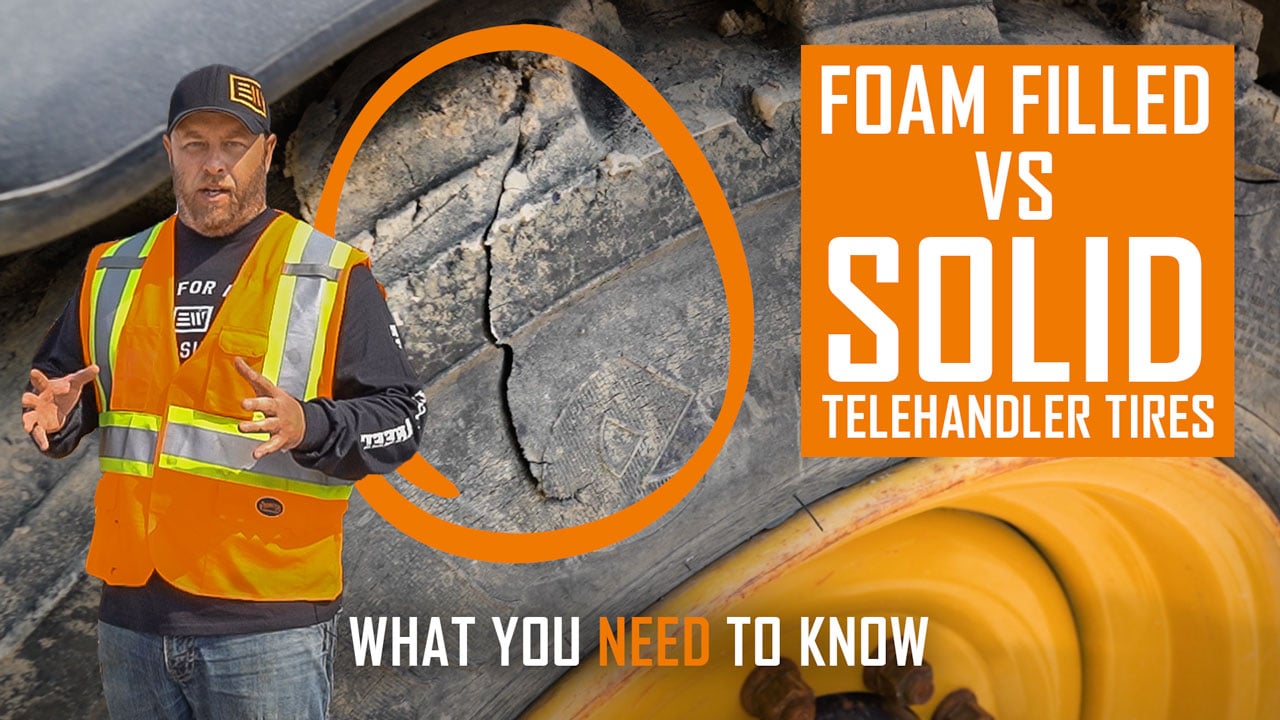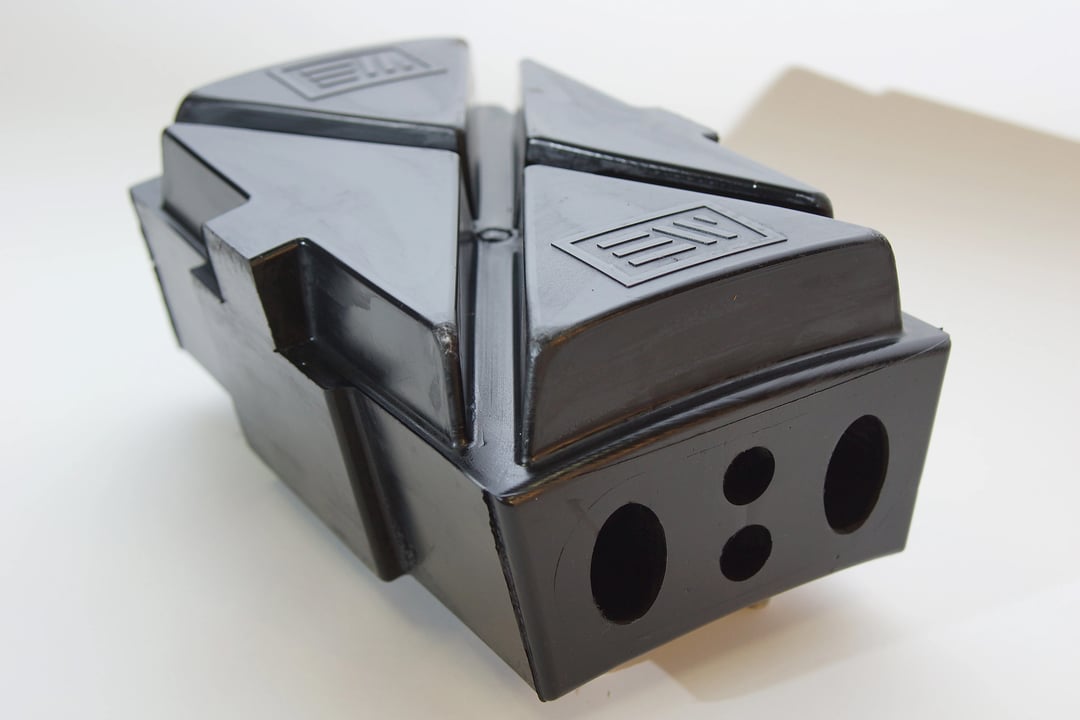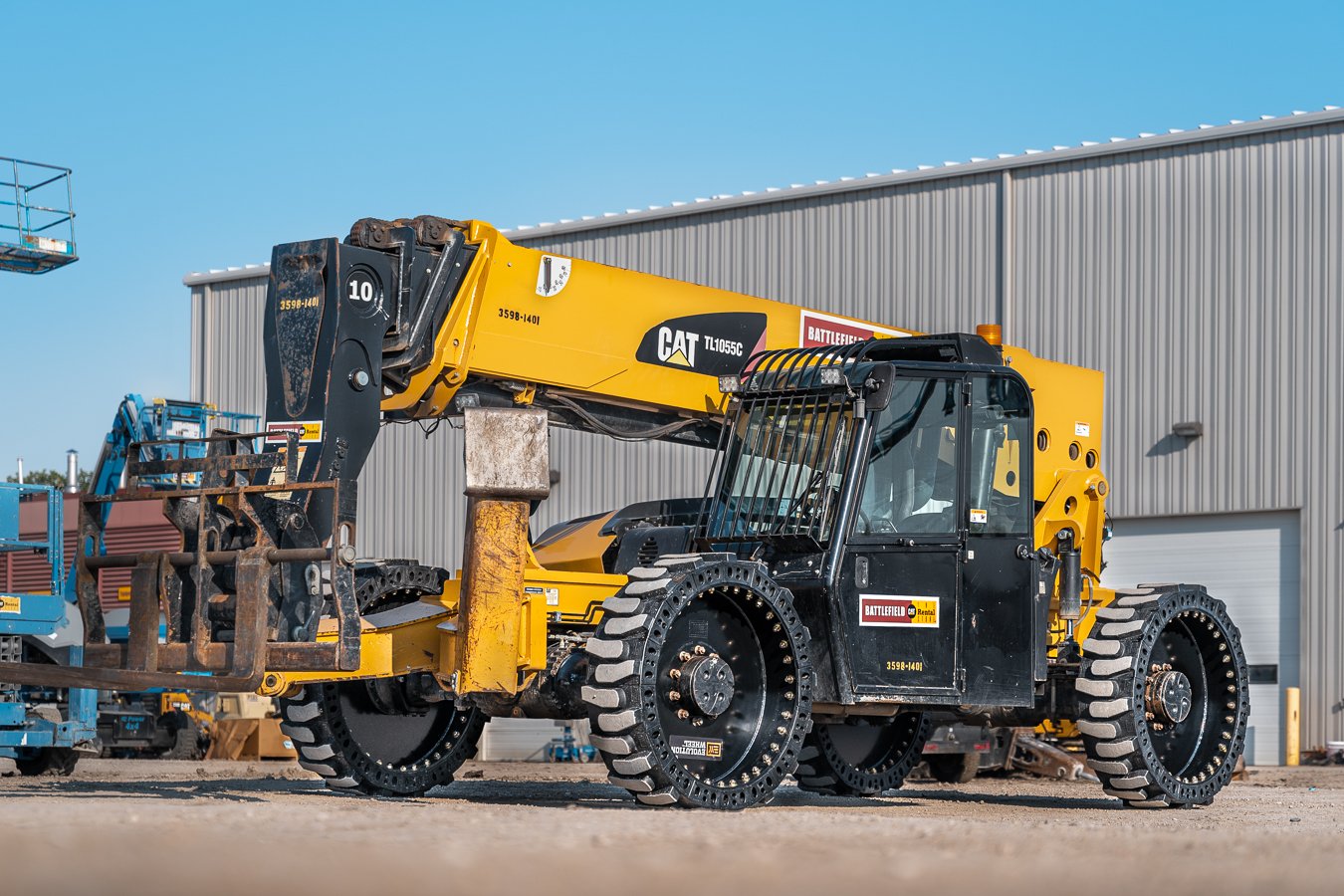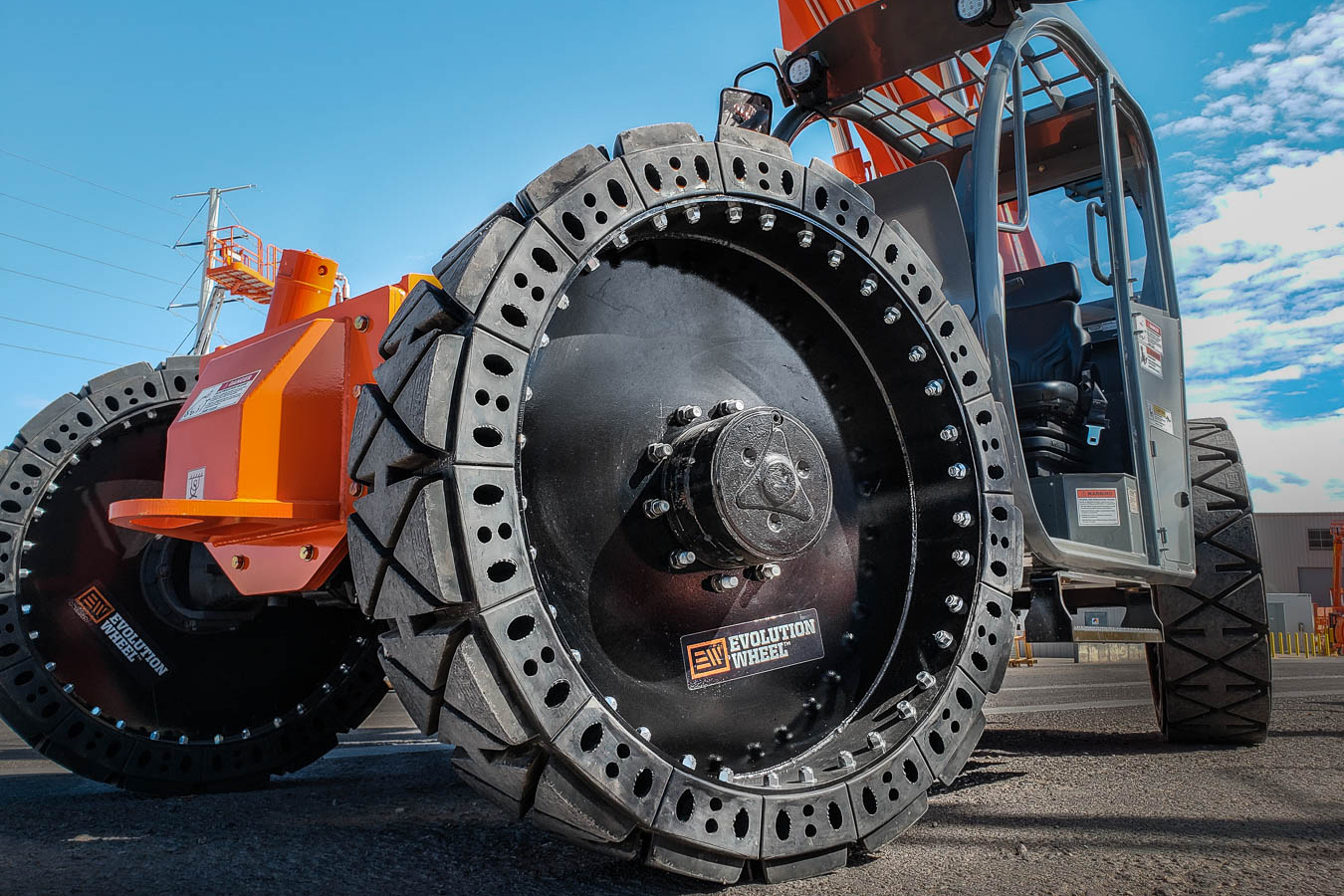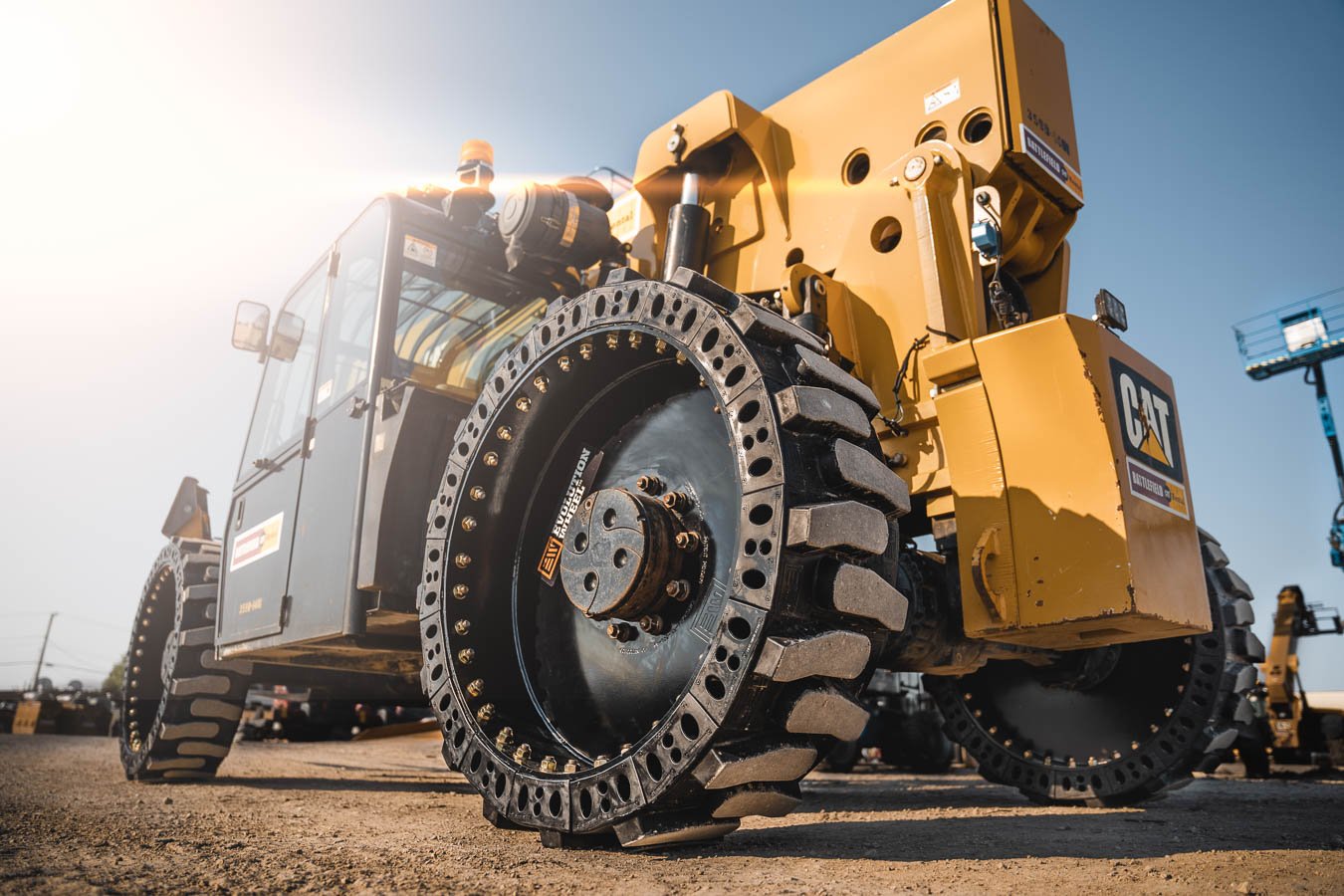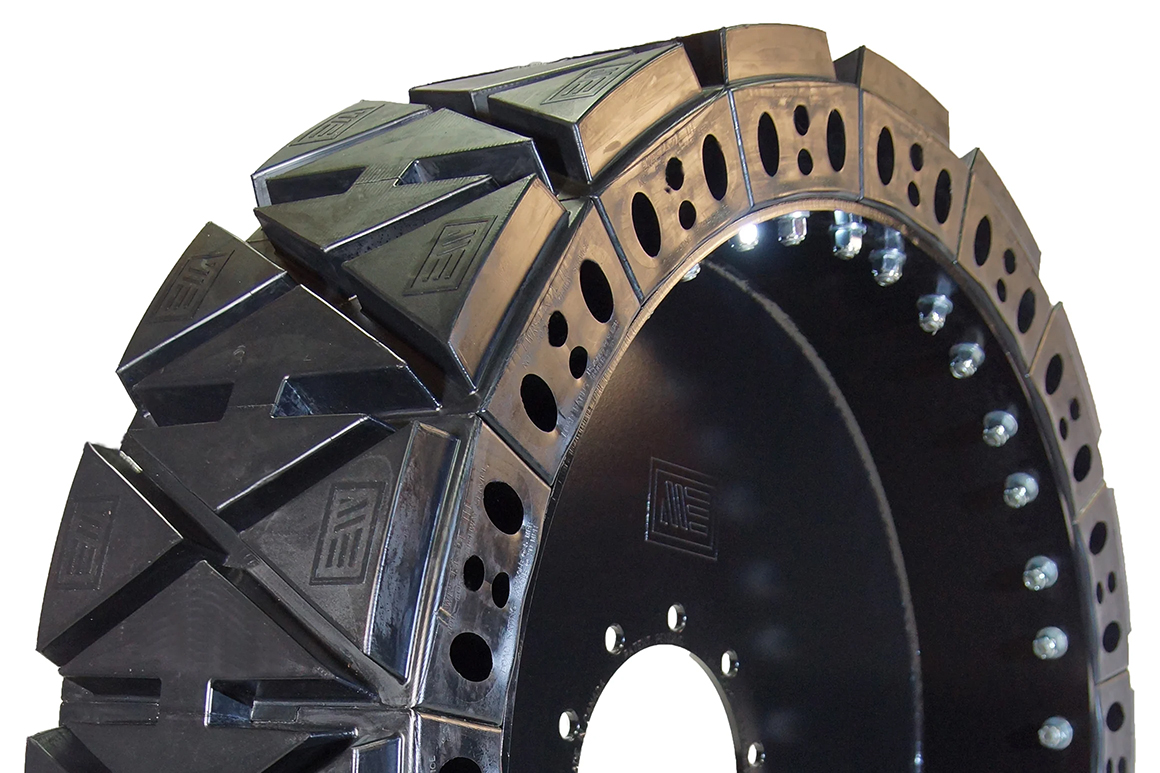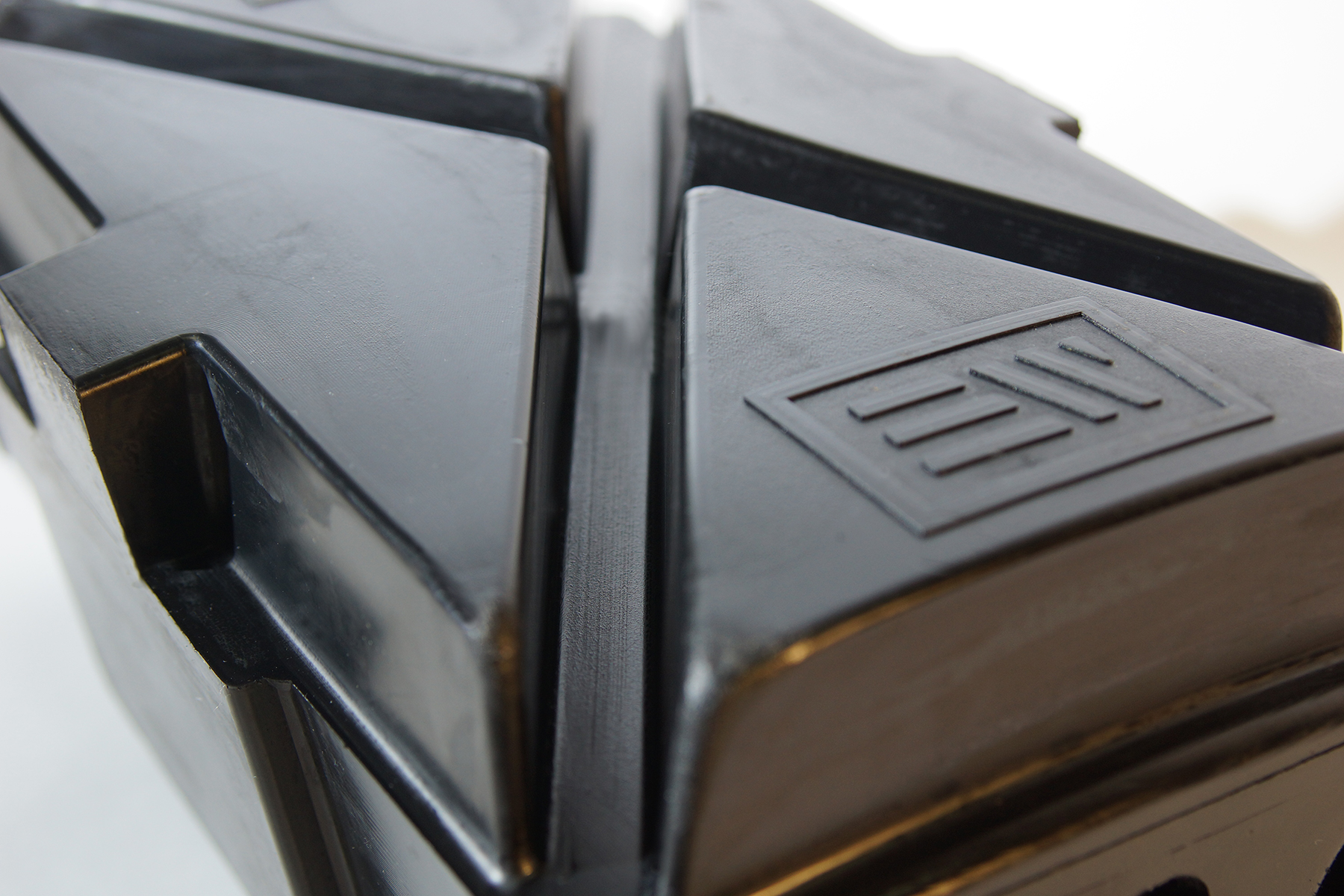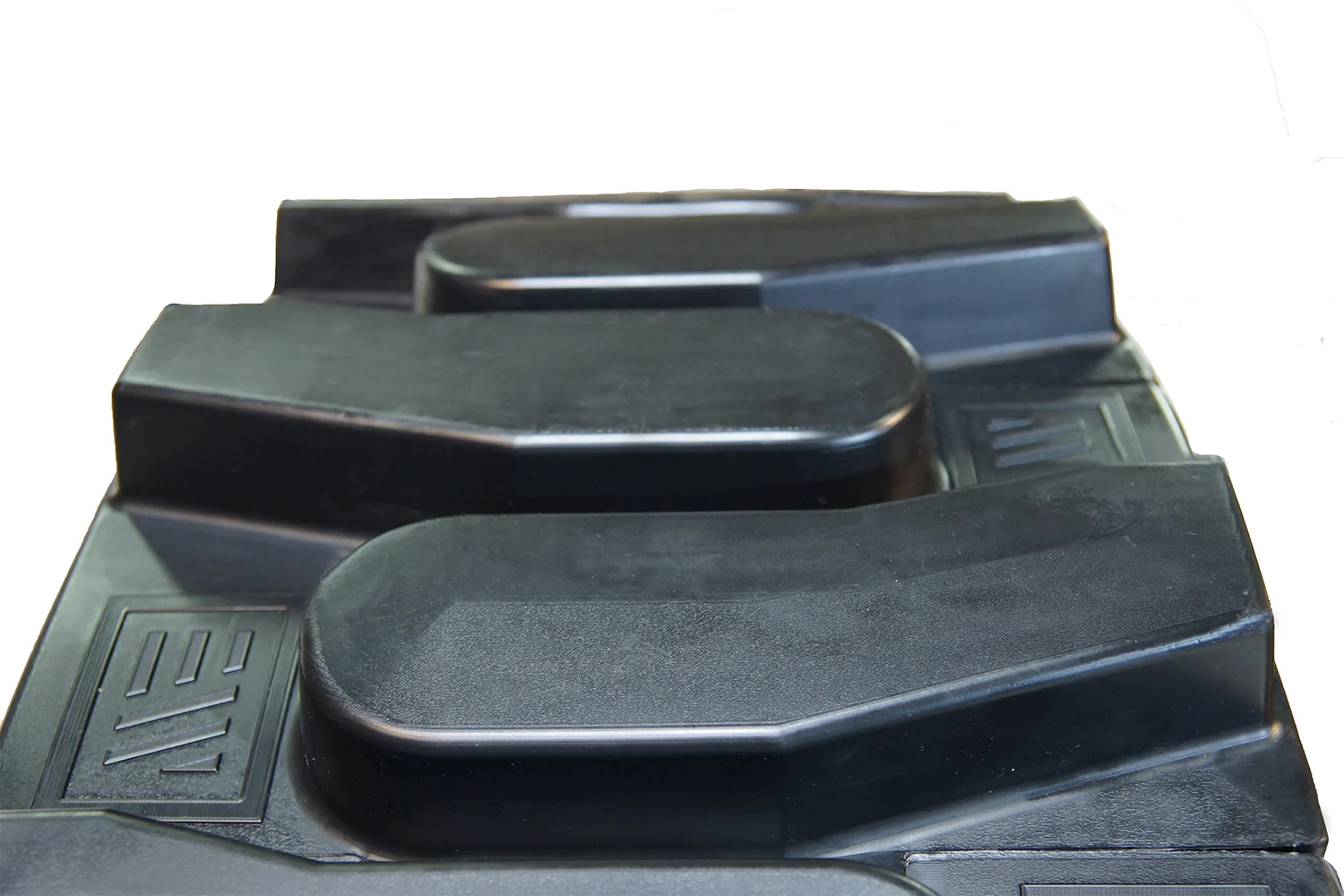The Most Cost-Effective Style of Telehandler Tires
There are three main types of telehandler tires. Pneumatic, foam-filled, and solid tires. The cheapest being pneumatics and the most expensive being solids. Though solid tires are the most expensive option initially, they are more cost-effective in the long run. Their solid design is more reliable and long longer than the other two options.
Pneumatic Telehandler Tires
Pneumatic tires can be dangerous in many applications. If punctures and sharp objects are a risk, foam-filled and solid tires are a much safer option. If a pneumatic tire goes flat while operating with a heavy load, the load becomes unstable. This can hurt employees working around the machine. As safety is everyone’s number one priority, they are not used in most applications.
Foam-filled Telehandler Tires
Foam-filled tires are much safer as they are puncture-proof. With the rubber casing being filled with foam, a puncture will not affect the tire in any way. They do however develop side wall damage. This sidewall damage, when severe enough, will squeeze the foam out of the rubber casing creating a hobbled tire. A hobbled tire causes an unstable ride making it unsafe and requiring them to be changed.
When foam-filled tires need to be replaced the rubber and foam have to be cut off the rim. This is a very time-consuming and expensive process, adding to the overall operating cost of foam-filled tires. The machine downtime can be lengthy, affecting the deadlines for the project.
Solid Telehandler Tires
Solid tires don’t have the same issues with sidewall damage that foam-filled tires do. A solid tire is built with a solid rubber casing around the rim with apertures in the rubber that allow for compression. This makes them more reliable, lasting till the tread is worn.
Depending on how the rubber is attached to the rim matters as well. Many solid tires when worn require the entire wheel to be replaced. Rim and all. Using a segmented telehandler tire is the best option as they allow serviceability. When the rubber is worn, it is as simple as changing out the segments on the rim decreasing the cost of replacing tires. If a lug is damaged operators are also able to replace the damaged segment with a spare and at a fraction of the price of a service truck call.
The EWRS-TH Series
Hard Surface Applications
A telehandler tire needs to be able to hold up the applications it’s operating. Often these applications are on hard surfaces that are extremely abrasive to tires. Having a tire that can withstand the abrasiveness of hard surfaces will lower your overall cost of operation while also giving you ease of mind.
The EWRS-TH-HS Series solid telehandler tire is made to withstand these conditions. These tires are built with specialized hard surface tread designed for longevity. The tire is a perfect rolling circle with a large ground contact area. Being a perfect rolling circle, it provides a comfortable ride where the large ground contact area eases the stress on the surface of the tire.
Linear Load Profile
The EWRS-TH Series solid telehandler tires also feature a linear load profile. This allows operators to accurately predict how the tires will compress under a load. The tires will compress at an even rate for every pound of weight added to a load. Creating a safer and more stable tire.
A Segmented Design
Like all of Evolution Wheel’s tires, the EWRS-TH Series is a segmented tire. Our segmented design provides serviceability for operators to eliminate downtime due to damaged tires. They are composed of rubber segments attached to the high-strength steel rim. A damaged segment can be removed and replaced with a new one. Within minutes. No need for special equipment or to call in a service truck.
When the tread is completely worn, a retread kit is available. The retread kit consists of a completely new set of rubber segments. The operator can replace the segments themselves without ever taking the rims off the machine.
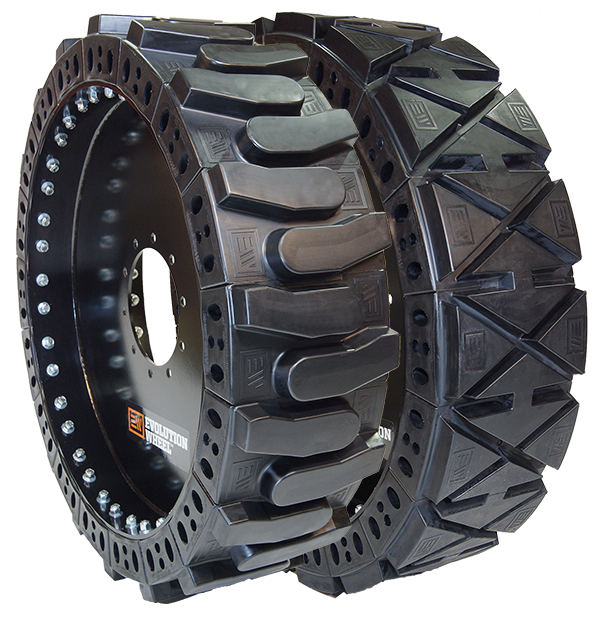

Related Pages
If this page was informative, check these out:

